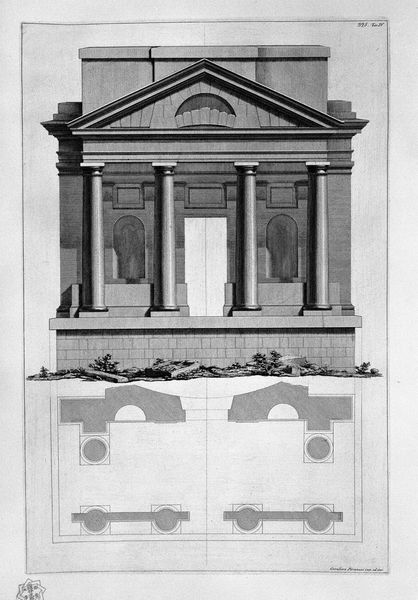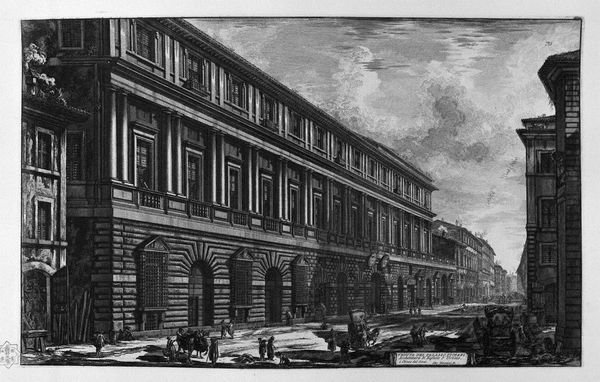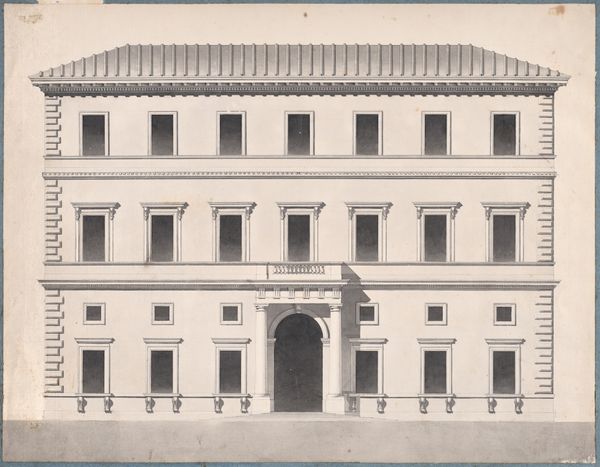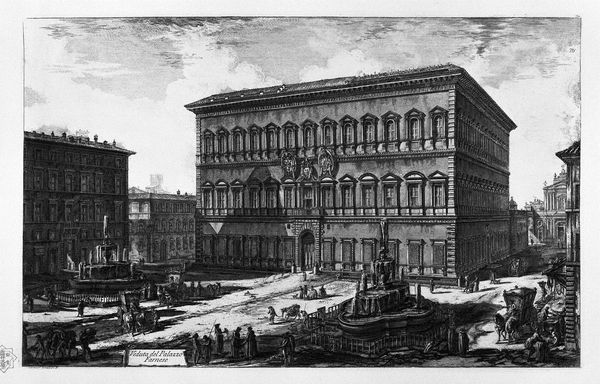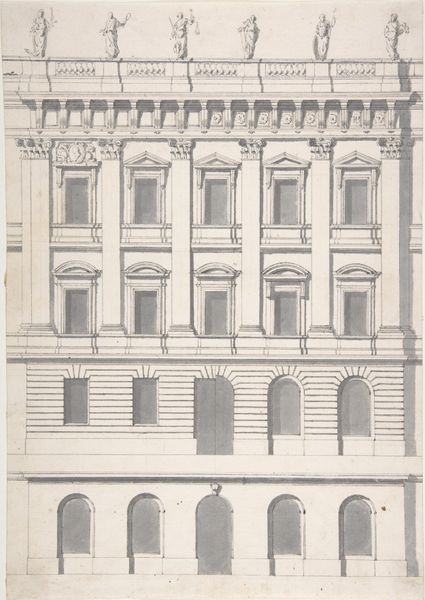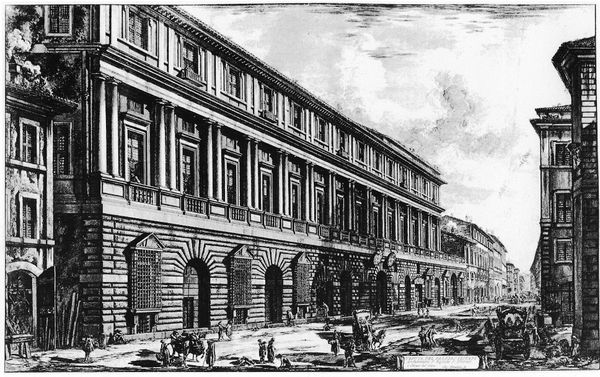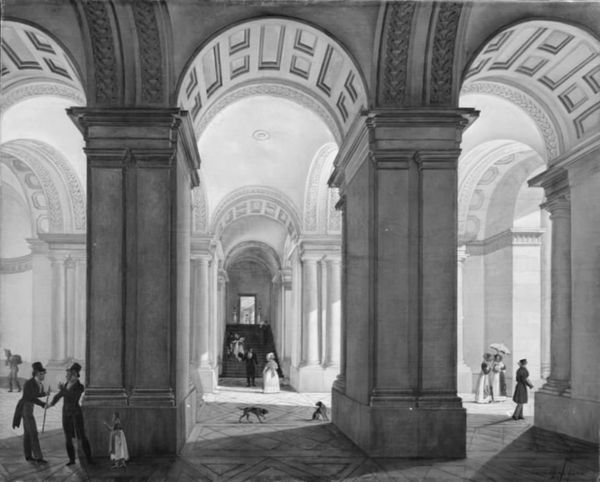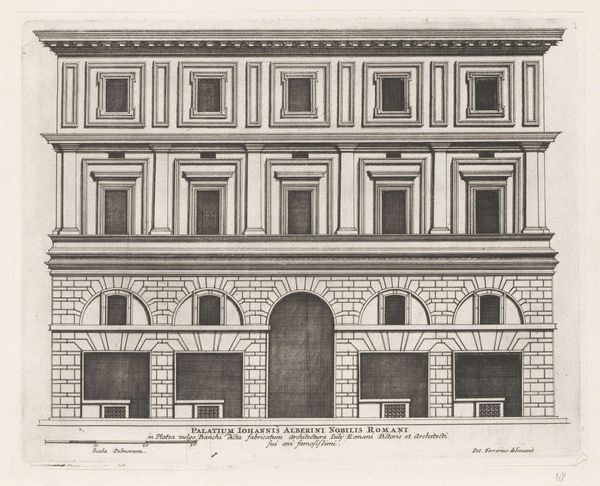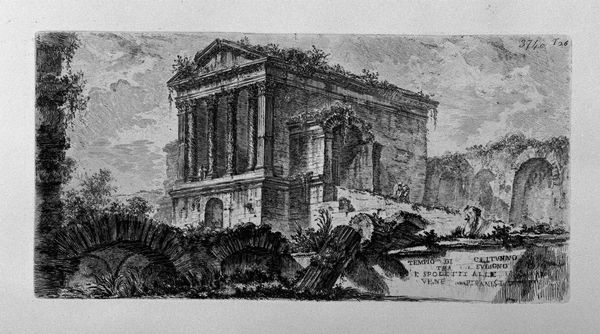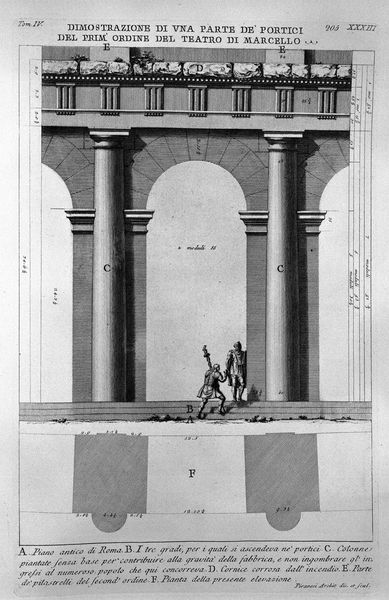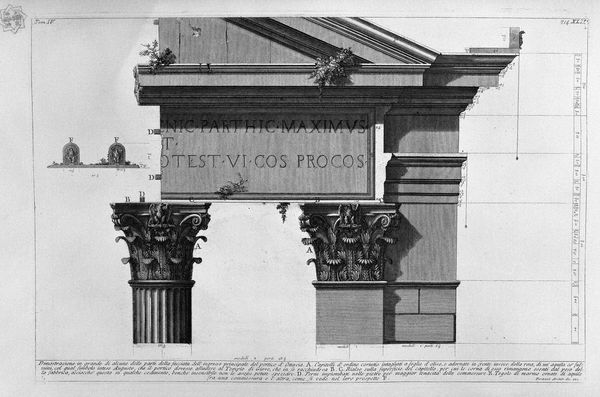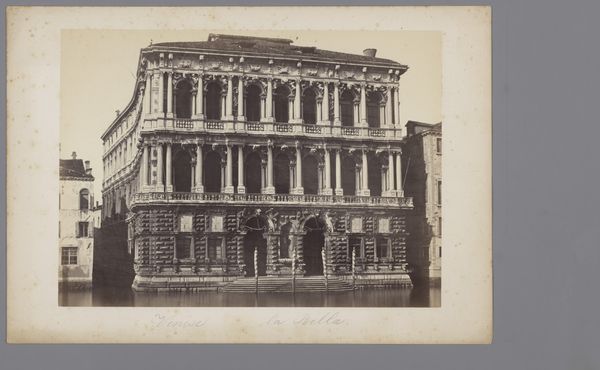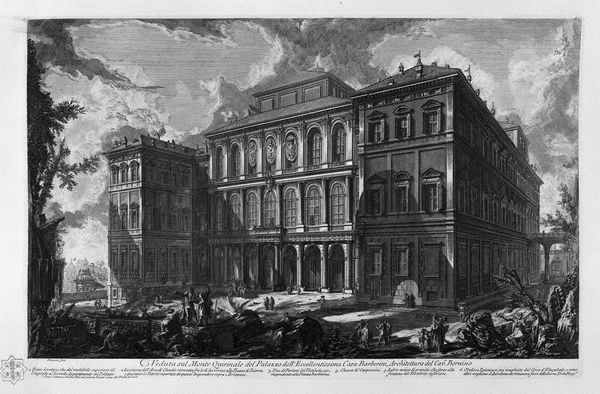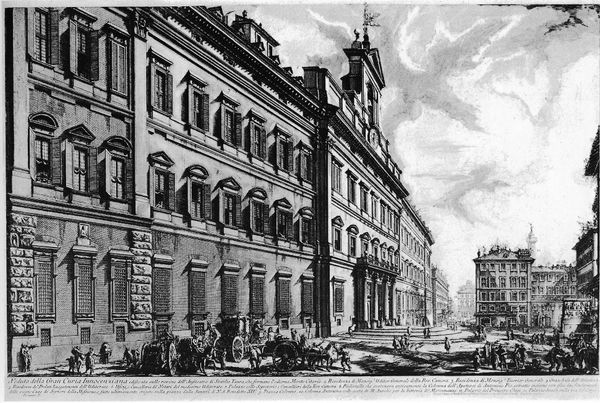
Demonstration of a part of the interior of the Pantheon put in a straight line
0:00
0:00
drawing, print, etching, engraving, architecture
#
drawing
#
neoclacissism
# print
#
etching
#
sculpture
#
classical-realism
#
perspective
#
figuration
#
historic architecture
#
romanesque
#
column
#
arch
#
history-painting
#
engraving
#
architecture
Copyright: Public domain
Giovanni Battista Piranesi made this etching of a section of the Pantheon’s interior in the 18th century. Etching is an indirect printmaking technique, where lines are incised on a metal plate using acid. Look closely, and you will see the vast amount of labor involved in the production of this print. Before the etching could even begin, the copper plate had to be prepared, polished, and coated with an acid-resistant ground. Piranesi then used a sharp needle to draw through the ground, exposing the metal beneath. The plate was then immersed in acid, which bit into the exposed lines, creating grooves. To create darker lines, the process was repeated, biting deeper into the metal. The final print that you see here would have involved inking the plate, wiping away the excess, and then pressing it onto paper. The complex architecture of the Pantheon has been flattened to a 2D plane through the process of printmaking. This etching is a testament to the skilled labor involved in the production process, in order to preserve the legacy of this great architectural monument.
Comments
No comments
Be the first to comment and join the conversation on the ultimate creative platform.
